Step 1 - Scheduler Installation
At this point, you installed the prerequisites reviewed all requirements for all three Window Book software products.
Installation of the software is based on one of the latest versions of Scheduler, and this will cover the installation steps for Scheduler. After this installation is complete, before moving on to Step 2 - PostalWeb Connector (PWC) Installation Steps, SQL Server Management Studio (SSMS) is required to manage your SQL data and permissions properly. This install will occur after you install, register, and start the Window Book Scheduler service.
If you use an existing SQL Server versus having Scheduler install SQL Server Express, you may have already installed SSMS.
-
Close any Window Book programs you currently have running on your server or computer.
-
After the download is complete, navigate to the downloaded file on the computer or server using File Explorer, right-click on the file and select Run as administrator.
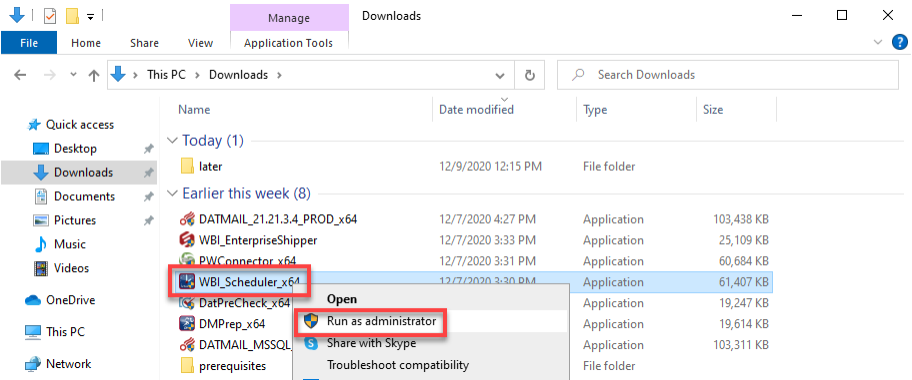
-
The Window Book InstallAware Wizard will begin to run some automatic system checks.

If applicable, the InstallAware Wizard will begin by installing the necessary Native Client files for connectivity to Microsoft SQL Server. Click Next to continue.
Do not select Skip Prerequisites. Instead, cancel out the installation and install any missing prerequisites listed if the 'Prerequisite Installation required' screen appears.
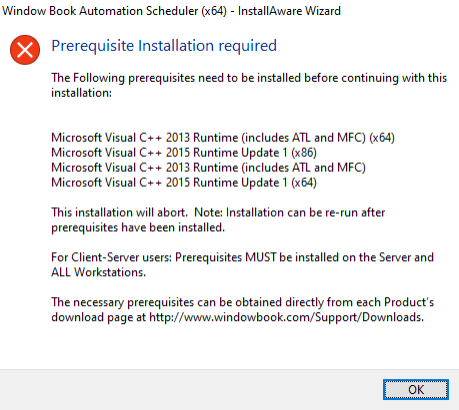
-
The Welcome to the Setup Wizard for Window Book Automation Scheduler (x64) screen will display. Click Next to continue.

-
When the Please exit all applicationsscreen appears, select the I accept the terms of the License Agreement checkbox. Click Next to continue.

-
The InstallAware Wizard will list the available plug-ins. Click the drop-down arrow next to the red ‘X’ for each individual plug-in(s) to be installed. Then select the option: Will be installed on local hard drive; or Entire feature will be installed on the local hard drive (either will work).
As you highlight each plug-in, there will be a description in the Feature description pane.
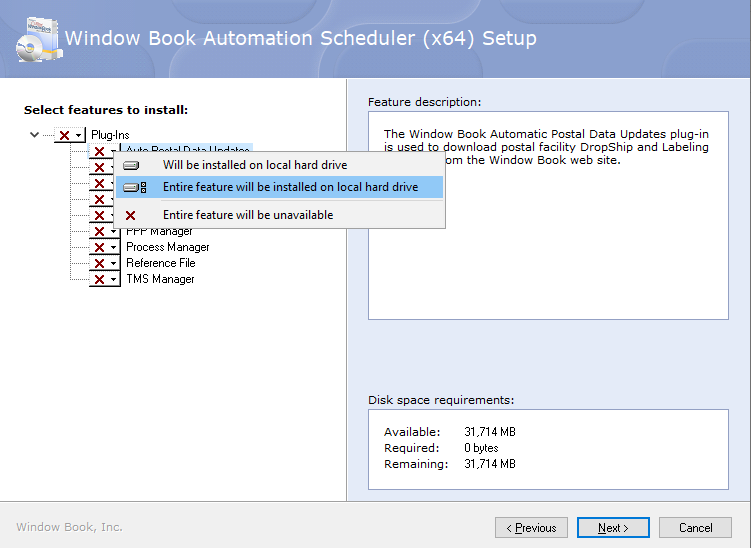
-
At a minimum, select Auto Postal Data Updates. In the example below, we install additional plug-ins. Once you choose all applicable Plug-Ins, click Next to continue.
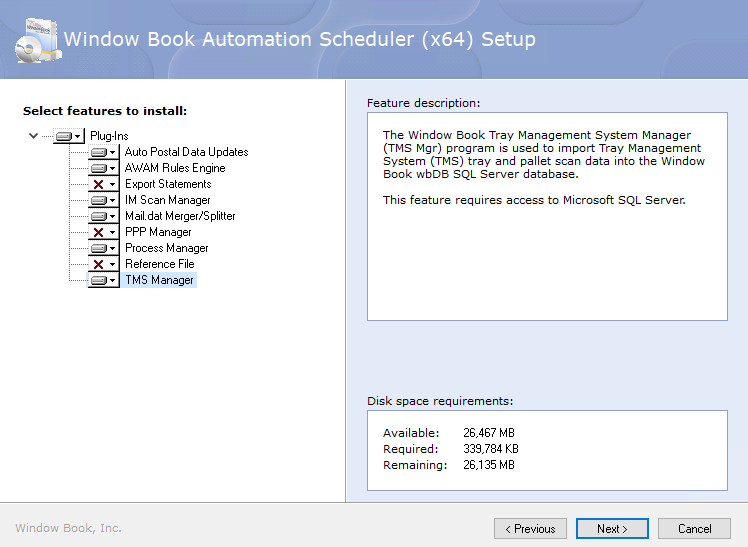
Only install those plug-ins you have in the registration key. If you have any questions, please contact your Window Book sales representative for more information about registration keys.
-
The Microsoft SQL Server Options screen will appear. If you need to install SQL Server Express, select I need to install SQL Server Express on this Machine and click Next.
If you plan to use an existing SQL Server, go to this page Step 1 (continued) - Scheduler -Install Using an Existing SQL Server.
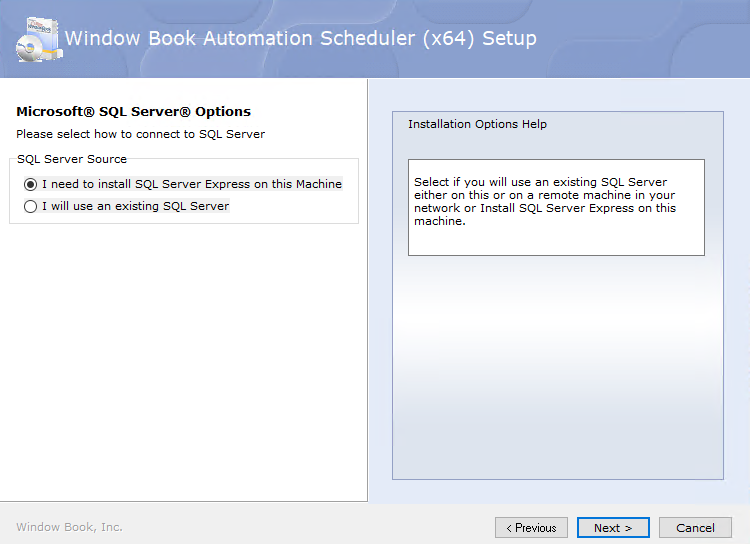
-
The Choose the application folder screen will appear; click Next to continue.
Window Book strongly recommends using the default provided. However, if installed on a server where program files are on a different drive changing the drive letter to match is okay, but please leave the path structure.
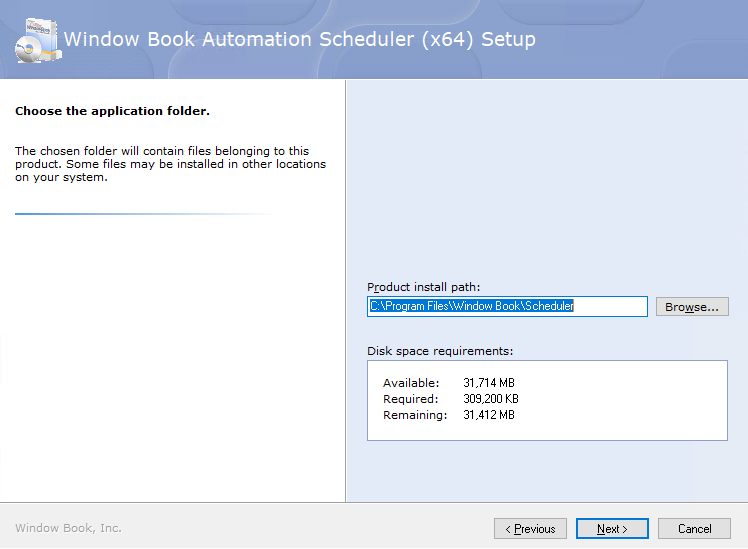
If TMS is a plug-in, the following screen shown will be the TMS Folder Options screen. This screen allows you to specify the type of scan you will. Then the installer will automatically create the data folders for those scans. The default scan type is WBI Scan. If you are unsure, you can select all three types.
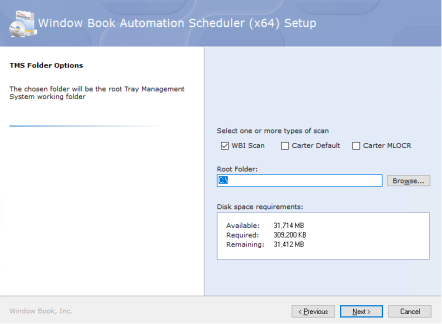
When the installation of Scheduler completes, the input and output data folders for each of the scan types enabled in the TMS Folder Options screen will be automatically be created under the ‘WBDotNet’ directory on the computer or server.
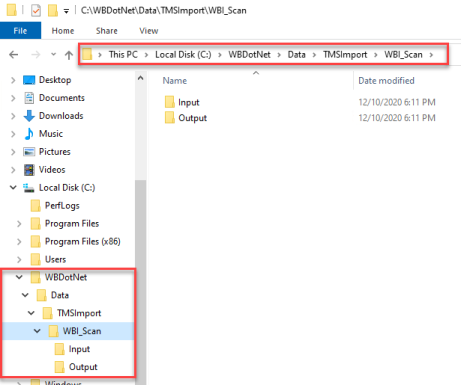
-
The Choose Start Menu group screen will appear. It has the Start Menu group specified and provides other options to be enabled (for example, Create a Desktop Shortcut. Leave the Start Menu Group as the default and enable the other options as needed). When ready, click Next to continue.
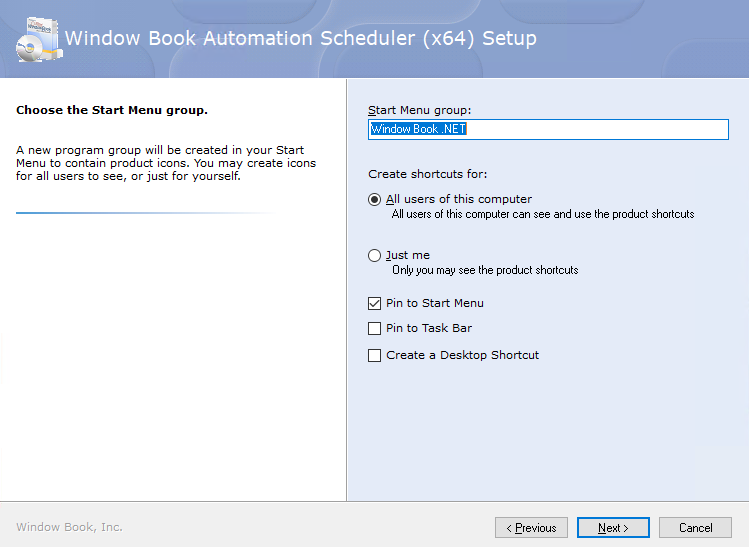
-
The Logon Information screen will display. Here the installer sets up a service called the Window Book Scheduler service. The steps are below.
Leave the Start Service After Install checkbox deselected. If enabled, depending on the server or computer’s settings, errors may occur during installation that results in the installation not completing successfully.
Windows Service Logon Information:
The Computer/Domain Name will default to the name of the computer or server that the Scheduler is installed on.
The Username will default to the login ID used to log onto that same computer. Therefore, you need to change the Username to your service-specific logon and then enter its Password.
See Service Log On Permissions for more information.
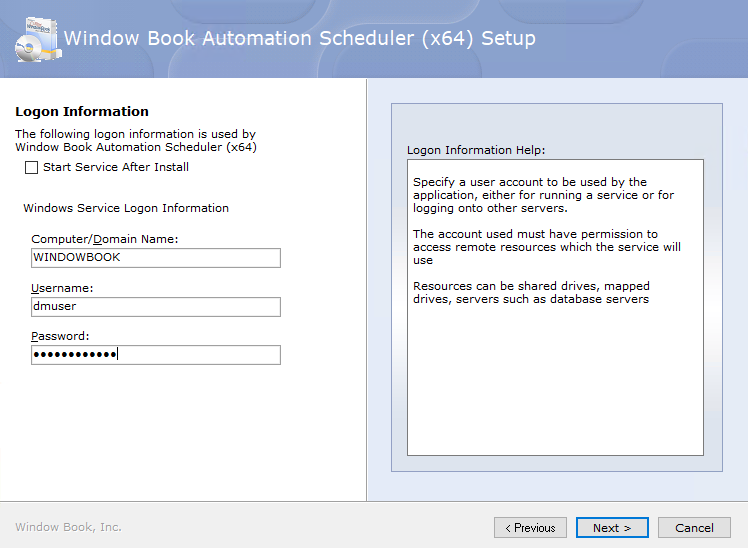
There will be instructions on starting the service after the installation and registration steps are complete.
-
The Ready to update your system screen will appear; click Next to continue.
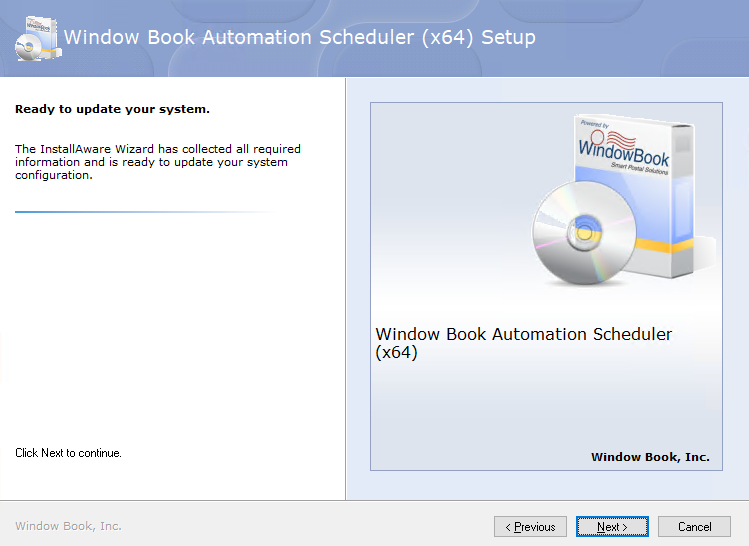
-
The Microsoft SQL Server YYYY Setup screen will display (YYYY represents the year); Window Book strongly recommends using the default provided. Click Next to continue.
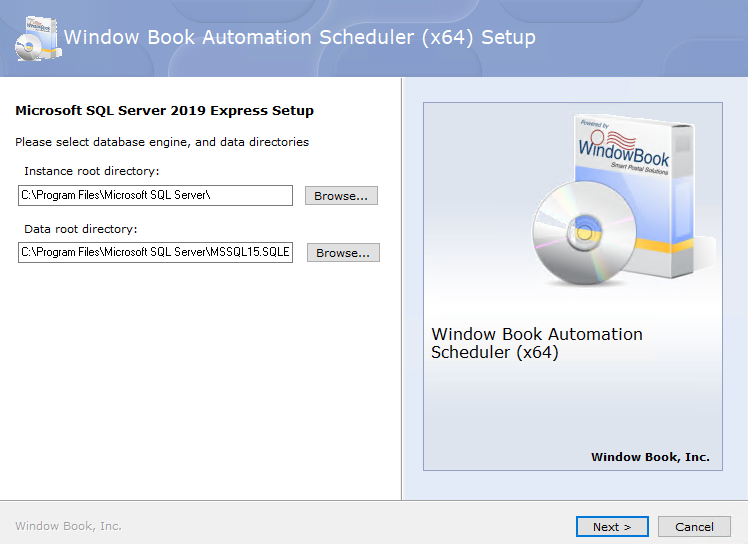
Please wait screen will display, and it will take a few moments to complete the setup.
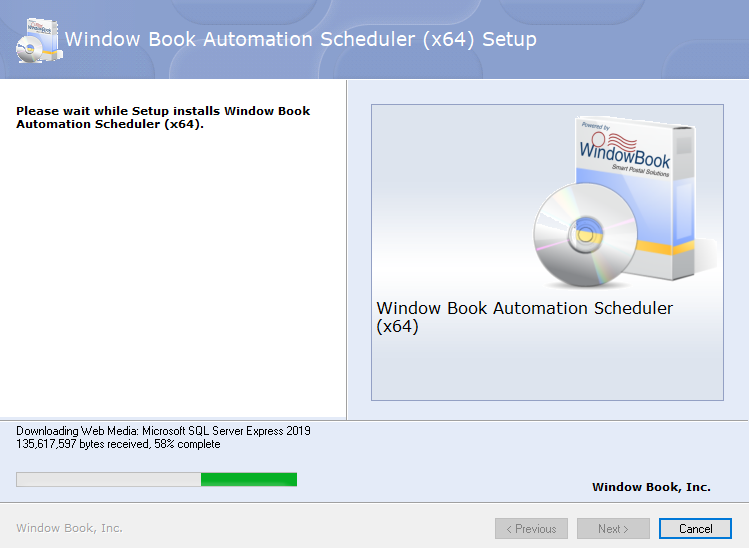
-
A MS SQL Management Studio - Information dialog will appear as a reminder. Click OK to continue the installation of Scheduler.
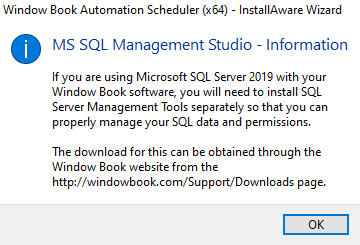
Now Scheduler has some internal scripts to run, such as creating databases. It could take some time, depending on the speed of your server or stand-alone.
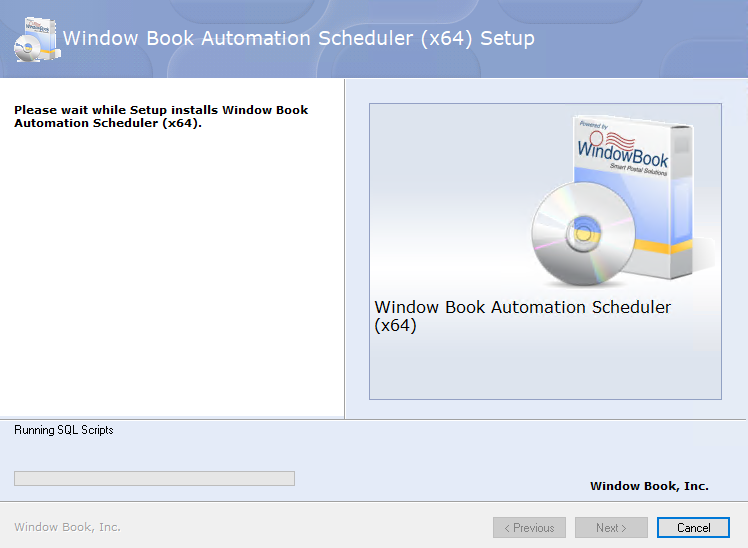
-
The Window Book Automation Scheduler (x64) Setup is complete screen will appear, click Finish.
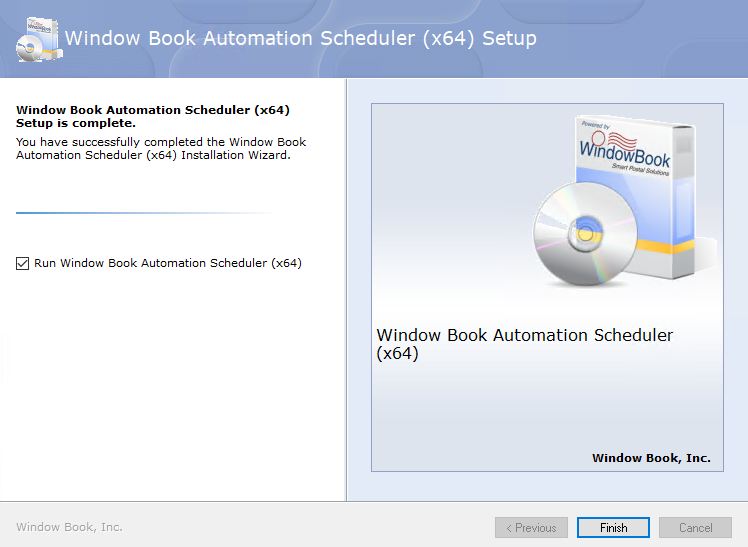
-
A Warning dialog may appear; click OK.
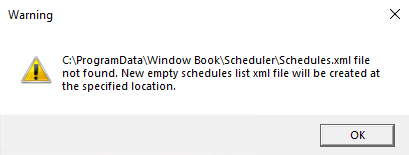
-
After a few moments, Scheduler will launch to the Not Registered screen, paste or enter the registration key provided. After you enter the key, click Register.

-
The Customer Information screen will appear, enter your Company and contact information (required fields are shaded in red). Once complete, click Done.
TThe User Contact Name and User E-Mail Address are used when you create a help ticket.

-
The Scheduler main screen will display. Installed plug-ins enabled through the registration key will display in the menu to the left. Confirm that the plug-ins selected during the installation are listed.
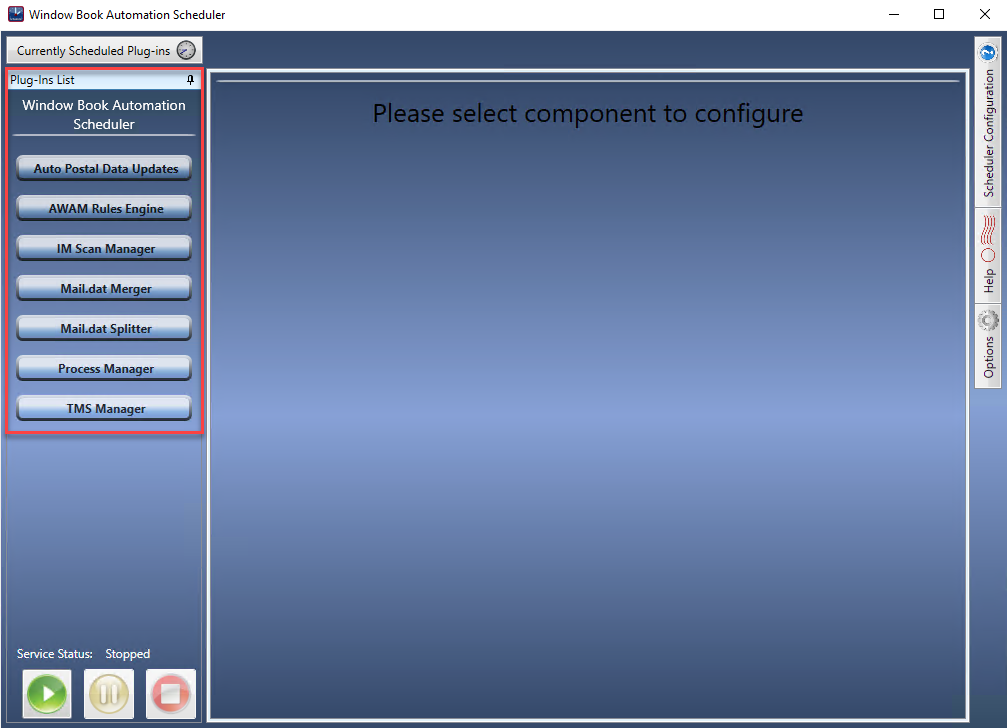
-
At this time, before attempting the installation of PostalWeb Connector (PWC), you must start the service and then run the Scheduler for a few moments.
You will see that the current Service Status is Stopped.

Click
 Start to change the status to Running.
Start to change the status to Running.
After the service has run a few moments, click
 Stop.
Stop. If the Service does not start, then see Scheduler - Starting the Service - Required. Keep Scheduler open; once you resolve the issue, make sure to Start the Scheduler Service within the application, before installing SSMS, if applicable and PWC.
-
Close Scheduler.
-
If you had Scheduler install SQL Server Express, the next step is to install SSMS. For assistance, see Installing SQL Server Management Studio (SSMS).
If SSMS is installed, then you are ready to install PWC.
Continue Step 2 - PostalWeb Connector (PWC) Installation Steps